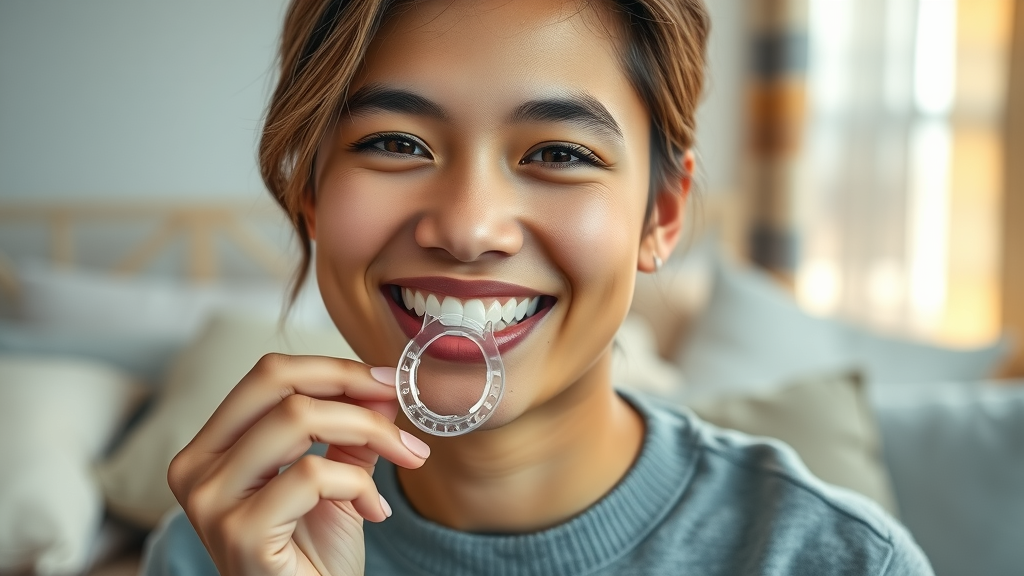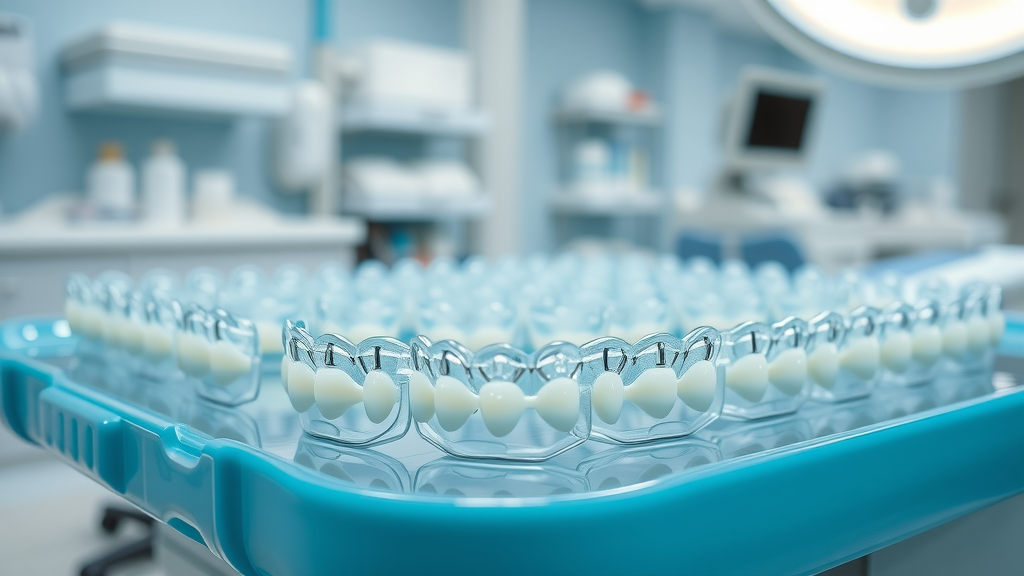Have you ever wondered, "Will my teeth move back after braces?" Just when you thought your journey to a straight, beautiful smile was complete, you hear stories about teeth drifting out of place. Are straight teeth truly permanent? Read on for answers that will keep your smile on track for life.
Are Teeth Destined to Move Back After Braces? Understanding Why Teeth Shift Post-Treatment
The truth is, teeth can shift back after braces are removed. Many people are surprised to find that despite successful orthodontic treatment, there’s still a possibility for teeth to move out of their desired position over time. This process is commonly known as teeth shifting after braces , and it can happen to anyone, regardless of age or treatment type. For optimal results, understanding why this happens is essential. Practical examples include failing to wear your retainer or natural forces, such as aging and jawbone changes, that gradually nudge your teeth back toward their original position. Even minor habits, like teeth grinding or skipping a retainer night, can contribute to teeth move and the need for further correction.
Why Do Teeth Shift After Braces Are Removed?
After your braces are removed, the fibers and ligaments in your gums and jaw, once held in tension, may attempt to return your teeth to their earlier alignment. This common occurrence—sometimes called relapse—can undo orthodontic progress if left unchecked. Teeth shift due to the natural elasticity of the supporting tissues around your teeth. Environmental factors, such as oral habits or the way your teeth come together when you bite, can also influence their movement.
In addition, daily activities—like chewing or even breathing through your mouth—can exert enough pressure to gradually move your teeth. Genetics set the stage, determining how your body reacts after braces are removed. Meanwhile, age can affect the density of your jawbone, making it easier for teeth to shift back with time.
How Your Teeth Might Shift Back to Their Original Position
Without proper retention, your teeth have a natural tendency to drift back to their original position. The first few months after orthodontic treatment are especially risky. During this stage, the bone around your teeth is still remodeling, and they are more likely to move back quickly if not supported. Sometimes, teeth shifting is so subtle that it goes unnoticed—an edge feels sharper, or a familiar gap reappears. Over time, these minor shifts can become major.
Even years later, teeth move can occur due to cumulative factors like gum disease , jaw bone changes, or simply not following your orthodontist's instructions. The best defense against your teeth shifting back is a reliable retainer routine and mindful attention to signs of relapse.
-
Key Factors That Cause Teeth to Shift:
Age-related changes
Genetics
Incomplete orthodontic treatment
Neglecting your retainer
Oral hygiene habits
Gum disease

Table: Common Causes of Teeth Shifting After Braces
Cause |
Description |
How to Counteract |
|---|---|---|
Not wearing retainer |
Allows teeth to drift back |
Wear retainer as directed |
Aging/jawbone changes |
Bone density can decrease alignment |
Regular orthodontic check-ups |
Teeth grinding/clenching |
Exerts pressure on teeth movement |
Use nightguard if recommended |
Oral hygiene issues |
Gum disease can loosen teeth |
Maintain careful oral hygiene |
What You’ll Gain from This Guide: Wisdom on Teeth Shifting and Strategies to Prevent Setbacks
The science behind teeth shift after braces
Why retainers are essential for long-term results
How to recognize your teeth have shifted
Practical ways to stop teeth from shifting
Questions to ask your orthodontist
The role of oral hygiene and aligners
What Happens After Braces Are Removed? The Initial Risk of Teeth Shifting
Once braces are removed , your teeth are especially vulnerable to shifting back. The bone and ligaments supporting the teeth need time to stabilize the new arrangement. During this crucial adjustment period, it’s normal to experience minor movement—sometimes described as “settling.” But without a retainer holding your teeth in place, more noticeable relapse toward their original position can happen quickly, especially if you struggled with teeth shifting after braces in the past.
For many patients, the most common time frame for teeth to shift is in the first three to six months post-braces. This is when you might spot subtle changes, such as small gaps, slightly crowded teeth, or a change in how your bite fits together. Staying vigilant during this phase can help you catch and address early warning signs before they become major setbacks.

Teeth Move After Braces: Early Signs and What to Watch For
It’s vital to monitor your smile for signs that your teeth have shifted after your braces are removed. Early indications include tightness or looseness in your bite, new food getting trapped in gaps, or slight crowding and rotation of previously straight teeth. If your retainer feels uncomfortable or doesn’t fit as smoothly as before, this may signal minor shifts that need prompt attention.
Other signs can be subtler, such as noticing a familiar space reappear between the teeth or feeling discomfort when chewing. Being aware of these changes and recognizing the pattern of shifting after braces is critical. Promptly contacting your orthodontist to address these issues can help prevent further movement and more involved treatment later.
Timeline of Teeth Shifting: What to Expect Immediately After Orthodontic Treatment
The timeline for teeth shifting after braces can vary from a few days to several months. In the initial days, your teeth begin to settle naturally into their new positions. If you do not wear your retainer as directed, noticeable movement can occur within weeks, sometimes sooner. By the six-month mark, and especially by one year, untreated minor shifts can accumulate and even result in significant relapse, making correcting them more complicated.
Long-term, if you maintain your retainer routine and schedule regular orthodontic visits, your chances of relapse are dramatically reduced. However, even years after braces or invisalign, the natural forces behind teeth move —including aging and oral habits—remain, so diligence is essential.
"Orthodontic treatment is only the beginning: your beautiful smile depends on what you do next." – Board-Certified Orthodontist
How to Prevent Teeth From Shifting After Braces: Retainers and Best Practices
To keep your teeth from shifting once braces are removed, wearing your retainer consistently is non-negotiable. Retainers are specially designed to hold your teeth in place while the supporting bone and tissues stabilize their new positions. Fixed and removable retainers each have their strengths, and your orthodontist will recommend the best type for your unique case. Neglecting your retainer is the number one reason patients see teeth move back to their original position —sometimes undetectably at first but more noticeably over time.
Best practices for preventing shift after braces include regular use and care of your retainer, addressing teeth grinding, and maintaining impeccable oral hygiene. All of these habits work together to defend your smile from unwanted change and help you enjoy lasting results.
Why You Must Wear Your Retainer: The Role in Stopping Teeth Back To Their Original Position
Wearing your retainer ensures your teeth do not shift back to their original position after your braces are removed. In the weeks and months following removal, your teeth are prone to moving back quickly if not protected. Retainers act as invisible braces, holding your teeth in place and encouraging bone and tissue stabilization around them. Regular use—especially at night—provides the best defense against teeth moving back, and creating a lifelong habit is the key to maintaining your beautiful smile.
There are two primary types of retainers: fixed and removable. Each comes with its pros and cons, so it’s important to work with your orthodontist to select the one that best fits your lifestyle and risks. Most people are advised to wear their retainers nightly for the first year or two after orthodontic treatment , and often indefinitely for maintenance as they age. Care instructions for a removable retainer, such as gentle brushing and safe storage, further protect your smile from bacteria and unplanned movement.
Fixed vs. removable retainer: pros and cons
How long you should wear your retainer
Caring for your removable retainer

Clear Aligners and Their Place in Maintaining Your Smile
For those who have already experienced teeth shifting after braces or who struggle with traditional retainers, clear aligners can be a modern solution for minor corrections and for maintaining a straight smile. Aligners provide a flexible, nearly invisible way to gently move your teeth back to the desired position with minimal disruption to your daily life. Many orthodontists now offer customized aligner plans to address minor shifts —helping patients correct, maintain, and prevent further teeth move.
Clear aligners are especially helpful for patients prone to losing or neglecting their removable retainers. They are discreet, removable for meals and oral hygiene, and generally more comfortable than traditional appliances. For best results, follow your provider’s instructions regarding daily wear and cleaning, and continue to communicate about your long-term goals for a beautiful smile.
What to Do If Teeth Have Shifted: Steps to Move Teeth Back After Braces
Even with the most diligent care, some patients experience teeth shifting after braces. If you notice your teeth have shifted , acting early is critical. Start by reaching out to your orthodontist for an evaluation—sometimes, minor shifts can be corrected quickly with a series of clear aligners or a new removable retainer. For more substantial movement, additional orthodontic treatment options, including braces or invisalign, may be considered to move your teeth back to their desired position.
The key steps to address shifting after braces include recognizing early signs, scheduling a check-up, and being open to treatment recommendations. Sometimes, a simple adjustment or a brief period in aligners can set things right. Do not wait to act—relapse left unchecked is much harder and more costly to fix.

Early Intervention: Noticing Teeth Shifting After Braces
Treating early signs of movement, like tightness, discomfort, or a retainer that won’t fit, helps prevent larger setbacks later. An orthodontist can spot subtle relapse patterns and suggest quick fixes before new habits set in. Minor corrections might include reshaping aligners or retainer adjustments, while persistent teeth move may merit a brief, targeted treatment. Prompt action keeps most cases from needing full re-treatment and gives you the best shot at a lasting, confident smile.
Orthodontic Treatments That Can Move Teeth Back: Options Beyond Braces
If your teeth have shifted significantly after braces, there are a variety of treatments available to move your teeth back. Minor corrections can be tackled with custom clear aligners, which gently nudge your teeth into place over a series of weeks. Removable retainers may also be effective for slight shifts and serve as a preventative to stop further movement. Consultation with your orthodontist should be your first step; they can assess if you need additional intervention or if simple at-home strategies are enough.
Minor corrections: clear aligners
Removable retainers for slight shifts
Schedule a check-up with your orthodontist
Oral Hygiene’s Role in Preventing Teeth To Shift Back
Maintaining top-notch oral hygiene does more than keep your teeth white and your gums healthy; it plays a crucial role in preventing teeth shift after braces. Gum disease and other oral health problems can weaken the support structures around your teeth, increasing the risk that your teeth will move out of alignment. Consistent brushing, flossing, and dental check-ups support the integrity of your bones and gums, providing a stable foundation for your newly straightened smile.
Maintaining Oral Hygiene to Prevent Teeth Shifting
A consistent oral hygiene routine keeps teeth in place after orthodontic treatment. Use fluoride toothpaste, floss daily, and attend regular dental and orthodontic visits to monitor your progress. This not only prevents gum disease but also helps detect and address any early signs that your teeth are shifting. Remember, your retainer and your toothbrush are equal partners in safeguarding your smile.

The Link Between Orthodontic Treatment and a Lasting Beautiful Smile
Your commitment following orthodontic treatment is what ensures a beautiful smile lasts for a lifetime. Staying consistent with oral hygiene , using your retainer, and monitoring for signs of teeth shifting are essential. Your orthodontist should be your partner for regular check-ups, helping you navigate everything from appliance repairs to troubleshooting minor movement. Remember that your smile is an investment—active care protects it for years to come.
How Consistent Care Secures Teeth From Shifting Back
Consistency is the secret behind retention success. The more you anchor healthy habits—wearing your retainer, brushing, flossing, and attending orthodontic appointments—the less likely you’ll see relapse. Even a minor shift , when caught early, is easier to fix than waiting until major movement has occurred. Integrate smile care into your daily and lifelong routine, and your teeth will reward you with confidence and comfort that lasts.
People Also Ask About 'Will My Teeth Move Back After Braces?'
How long does it take for teeth to shift back after braces?
Many patients notice slight teeth shifting within weeks if retainers aren’t used as advised; significant movement may take several months to appear. It all depends on your body, habits, and routine. Consistent retainer use is the best way to keep your teeth in place and avoid early relapse after braces are removed.
How long does it take for teeth to relapse after braces?
Relapse can begin within days or weeks, but the speed and severity of teeth shifting vary from person to person. Without a retainer, teeth quickly respond to natural forces and may shift back. Regular retainer wear can prevent or minimize relapse, ensuring long-term results following orthodontic treatment.
Can teeth move 10 years after braces?
Yes, teeth can shift even a decade after braces, particularly if retainers aren’t worn or due to natural aging processes. Factors like jawbone changes, genetics, and lifestyle play roles. Periodic check-ins with your orthodontist and occasional retainer use offer the best insurance against long-term teeth shifting.
Can braces move teeth back up?
In some cases, additional orthodontic intervention, including braces or aligners, may be necessary to move teeth back after they have shifted. Modern solutions like clear aligners or removable retainers often correct minor movement, while more severe cases might require traditional braces again. Professional assessment is crucial to select the right approach.
Frequently Asked Questions on Teeth Shifting After Braces
What foods should be avoided after braces are removed?
Will my teeth feel loose after braces?
Can wisdom teeth cause teeth to shift post-braces?
What is the average cost to fix shifted teeth after braces?
Do nighttime retainers stop teeth shifting?
Key Points for Retention: How to Keep Teeth From Moving Back After Braces
Always follow your orthodontist’s instructions about retainers
Schedule regular check-ups
Be alert to early signs of shifting after braces
Practice excellent oral hygiene
Maintaining Your Smile: Lasting Results After Braces
"Your dedication after orthodontic treatment is the secret to a smile that lasts a lifetime."
Subscribe for Trusted Orthodontic Guidance and Smile Secrets
Subscribe now to get the latest Grand Strand orthodontic guides, tips, and updates — right to your inbox. No spam. Just smiles.
After completing orthodontic treatment, it’s natural to wonder if your teeth might shift back to their original positions. Understanding the factors that contribute to this movement and how to prevent it is crucial for maintaining your straightened smile.
Why Do Teeth Shift After Braces?
Several factors can cause teeth to move post-treatment:
Natural Aging Process: As you age, your jawbone can change, leading to gradual teeth movement. ( graggortho.com )
Ligament Memory: The periodontal ligaments, which hold your teeth in place, have a tendency to revert to their original positions after being stretched during orthodontic treatment. ( nicolasandasp.com )
Bone Remodeling: After braces are removed, the bone surrounding your teeth continues to remodel and may not fully stabilize for several months, making teeth susceptible to shifting. ( nobleorthodontic.com )
Lack of Retainer Use: Not wearing retainers as prescribed is a common reason for teeth shifting back. ( smilesbywillis.com )
How to Prevent Teeth from Shifting Back
To maintain your teeth’s alignment after braces:
Wear Your Retainer Consistently: Retainers help hold teeth in their new positions while the surrounding bone and tissues stabilize. ( invisalign.com )
Maintain Good Oral Hygiene: Healthy gums and teeth provide a stable foundation, reducing the risk of movement. ( loughboroughorthodontics.co.uk )
Regular Dental Check-ups: Routine visits allow for early detection and management of any shifting. ( smilesbywillis.com )
By understanding these factors and adhering to post-treatment care, you can enjoy a lasting, beautiful smile.
 Add Row
Add Row  Add
Add 




Write A Comment